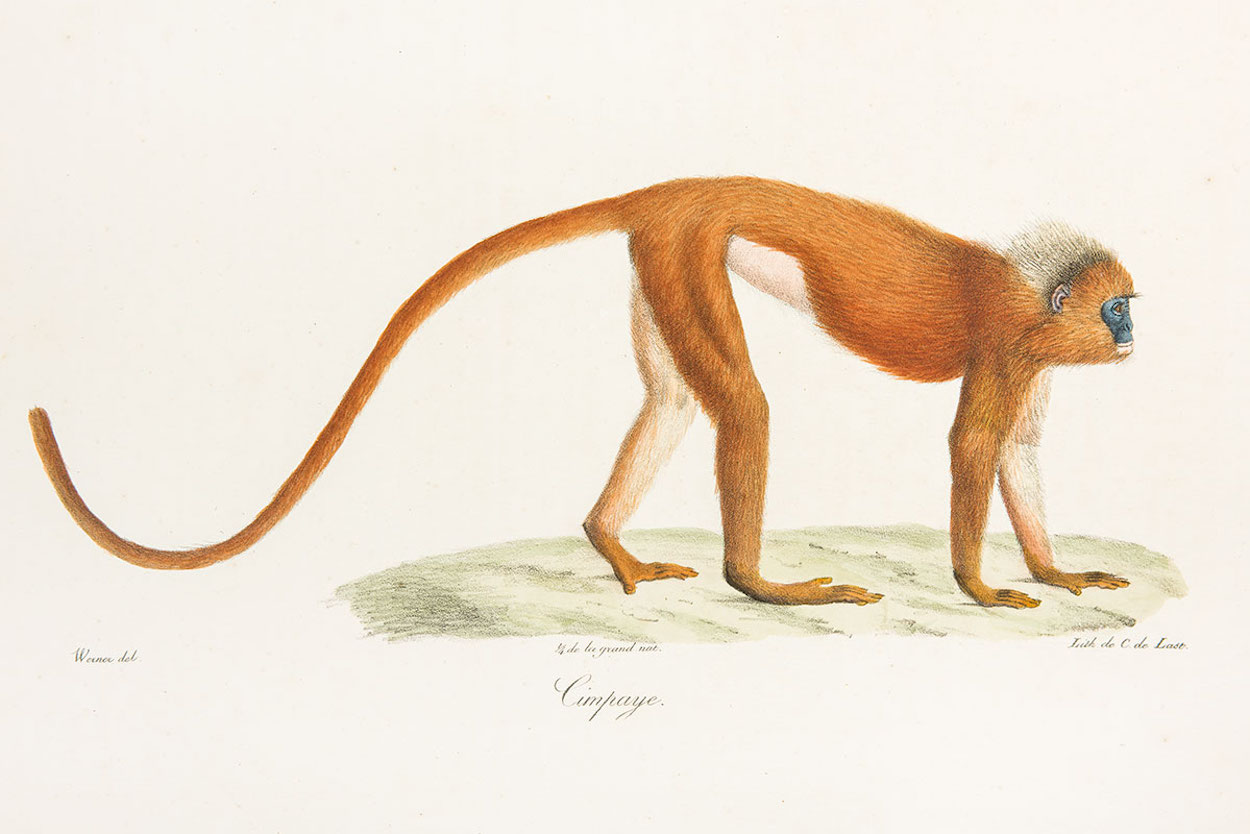In the early 19th century, the vast collections of the Paris Natural History Museum were tapped by both naturalists and the illustrators they had employed since the days of Louis XVI. As the museum had its own zoological gardens, they were able to pursue their research in Paris without having to embark on expeditions. The anatomists Étienne Geoffroy Saint-Hilaire (1772–1844) and Frédéric Cuvier (1773–1838) conducted their observations for their new atlas of mammals there. In this four-volume work they amassed their concise, mostly two-page descriptions of the various animal species. Each of these was accompanied by a color lithograph made on the basis of drawings by Jean‑Charles Werner (1796–1856). These images of the animals tend to show them in profile in a stationary pose, in accordance with the tradition of French zoological illustration, so that they imitate museum exhibits.
Charles Darwin averred that there was no other mammal as colorful as the mandrill. Extremely strong sexual selection led to a highly pronounced sexual dimorphism during the evolution of this species; only males have the brightly colored blue and red muzzles and buttocks area and the full mane.
The lithography can be seen until 14 August 2021 at the Plants and animals: Atlases of natural history in the age of Linnaeus exhibition at the Museum of King Jan III's Palace at Wilanów, Warsaw.
P.S. Here you can read more about the art of botanical illustration!


 C.P. Lasteyrie ner de Saillant after Jean-Charles Werner
C.P. Lasteyrie ner de Saillant after Jean-Charles Werner